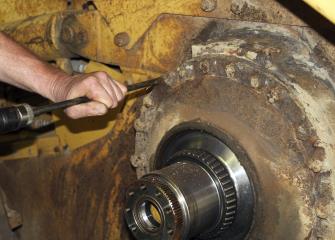Axis
Capital Group, based in Singapore, is a company that sells and rents
construction capital equipment from cranes to excavators and related heavy
construction equipment throughout Southeast Asia. The company is a multi-line
dealership that is dedicated in helping you in discovering the products that will
meet your job requirements. This Singapore based company is dedicated in
providing high quality thus far affordable equipment in many Southeast Asian
countries such as KL Malaysia, Beijing China, Jakarta Indonesia and many
more.

Learn the Job Duties of Heavy Equipment
Repair Technicians
The construction industry,
manufacturing companies and some utility companies rely on equipment like
bulldozers and forklifts to make heavy tasks to light work. Heavy equipment
repair technicians are called in to service the equipment when equipment breaks
down. Repair technicians, which are train in vocational and hands-on programs, need
thorough knowledge of the inner workings of the equipment.
Consider an
Educational Program
Community colleges and vocational
schools provide programs concentrating in heavy equipment repair. It is
possible that these programs will lead to professional certificates or
associate's degrees in areas like heavy equipment maintenance technology.
Programs cover diesel engines, diagnostic techniques and hydraulics as well as
the electronic and computer systems increasingly used in heavy equipment.
Get
On-the-Job Training
Many heavy equipment repair
technicians begin in entry-level positions and do simple tasks under
supervision. They are given responsibility for more complex tasks as
technicians gain experience. According to the U.S. Bureau of Labor Statistics,
it takes 3-4 years of on-the-job experience to be considered a fully qualified
service technician. Warning! There are many not credited training facilities
that sprout all over.
Consider
Certification
Professional organizations, like the
National Institute for Automotive Service Excellence, offer voluntary
certification for heavy equipment repair technicians. For one to become
certified, applicants should have the compulsory experience and pass an exam.
Certification validates that technicians have a high level of ability and
professionalism. Certification organizations often offer opportunities for
continuing education and professional growth.
Pursue
Career Advancement
As technicians gain experience they
may move into roles with bigger responsibility. Some move into supervisor or
management roles while others may go on to open their own repair shops.
Technicians with certifications or advanced degrees may be more likely than
those without to earn promotions or raises.





